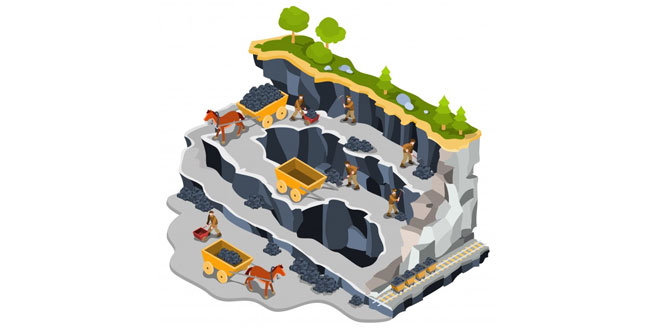Question: In a petroleum well, crude oil is found above water. Which two properties of petroleum make it possible to form a layer of it above water?
Answer:
- It is lighter then the water so petroleum floats over the surface of the water.
- It is insoluble in water so that’s why it form a layer on the water surface.
Question: What are different types of coal?
Answer: Different types of coal are:
- Peat (less than 20% carbon)
- Lignite (Brown Coal) contains 25 – 35 % carbon.
- Bituminous coal (Soft coal) contains 45 – 86 % carbon.
- Anthracite coal (Hard coal – It has the highest heat energy) contain 87 – 97%carbon.
Question: What is destructive distillation of coal?
Answer: Destructive distillation of coal is carried out by heating coal strongly to 1000°C in the absence of air. It yields various useful organic and inorganic products. These products are – Coke, Coal gas, Coal tar and Ammonium compounds.
Question: Why petroleum is also called black gold?
Answer: The constituents of petroleum are very useful for us. Due to its great commercial importance, petroleum is also called ‘black gold’.
Question: How are the various constituents of petroleum separated? write their uses.
Answer: The various hydrocarbons present in petroleum have different boiling points. As the number of carbon atoms in a hydrocarbon increases, its boiling point also increases. This property is used to separate the different components of petroleum by fractional distillation. The components with different boiling points are known as fractions, and the process of separating the fractions by fractional distillation is known as refining. It is carried out in a petroleum refinery.
- Crude oil is first heated to about 400 °C in a furnace. The vapors formed are passed into a tall fractionating tower.
- The hydrocarbons with the highest boiling points condense first. They get collected near the base of the fractionating tower.
- As the vapour rises, the hydrocarbons with lower boiling points condense at different heights.
- They get separated in the fractionating tower to form the different fractions.
- The hydrocarbons with 1-4 carbon atoms, which are gases, do not condense and escape from the top of the tower.
- Each fraction obtained is itself a mixture of several hydrocarbons.
- Some of these are used in the same form as obtained. Others are further separated by fractional distillation or methods to give different products.
- Some important petroleum fractions and their uses are given below:
 Class Notes NCERT Solutions for CBSE Students
Class Notes NCERT Solutions for CBSE Students



